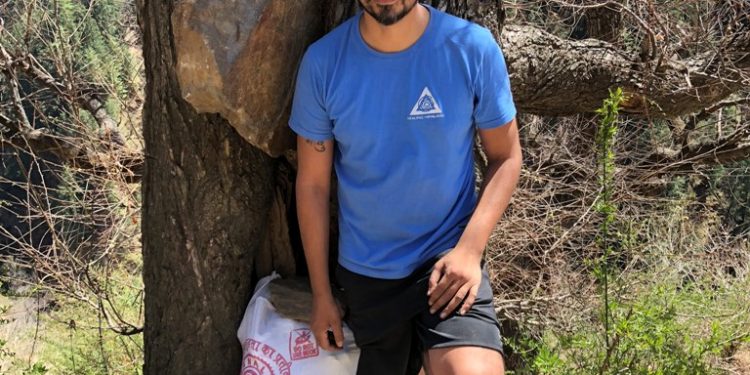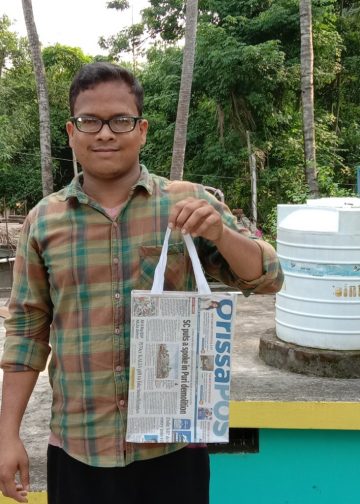Don’t you feel like trekking in the mountains whenever you watch the movie Yeh Jawani Hai Deewani? Thank Bollywood for glamourising adventure sports, especially trekking in the Himalayas. So much so that it has become the in thing among youngsters. However, the flip side of this is that there is greater environmental pollution in the mountains as the number of trekkers’ increases, and nobody seems to understand the gravity of the problem.
“Earlier when we used to go trekking, we used to follow the trails, but today if you think you are lost, then just follow the plastic to reach the destination,” says Pradeep Sangwan, an adventure enthusiast and passionate trekker.
Pradeep was so bothered by the garbage left behind by tourists and mountaineers that he decided to educate people about the growing problem of plastic waste in the hills with ‘Healing Himalayas.’
Hailing from Haryana, Pradeep moved to Manali in 2009, as trekking was something he was passionate about. Initially, he went on short treks outside the city, but then he moved on to longer treks.
“I always had a fascination for trekking. But now, trek routes have been turned into garbage dumps, including plastic waste. Earlier I used to work independently, but then I realised that to promote cleanliness programmes and make things work in a more organised manner, a platform is needed where people will come and participate. That’s how Healing Himalayas came into existence in 2016,” says Pradeep.
The avid traveller adds, “Social media is a good platform when it comes to connecting with people who are interested. When we started, we used to carry out the cleanliness drive for one day but gradually the number of working days increased. Trek routes are our prime focus and will always remain important.”
At present, a cleanliness drive is being held at Srikhand Pilgrimage, which is one of the toughest pilgrimage treks in the country. A good number of devotees use this route yet there is a lack of proper garbage disposal options en route. Before this, a cleanliness drive was carried out at Kheerganga, which is famous for cannabis, and these days it is also famous as a ‘chill out zone’ among youngsters.
Pradeep says, “For every destination, we have approximately 30 to 40 volunteers who pick the materials that can be recycled while the rest is disposed of in the dump yards.”
Pradeep praises Odisha forest officials for their concern about Mother Nature. He says, “In Odisha, the Forest Department is very concerned about their forests and the department is very active when it comes to protecting and conserving nature. Here too, we need that kind of zeal and enthusiasm among the people and authorities. Nothing can be achieved alone; a collaborative approach is needed, and with the help of locals, things can be done very easily.”
Pradeep also points out that people goon treks without any proper information. “There are people who go for trekking without any planning or proper preparation. They just land up at the destination to follow the trekking trend. Earlier, people preferred trekking to get a break from the hustle–bustle of life, but today, it’s more to post a photo on social media,” he says.
“Shepherds have an eco-friendly lifestyle,” he adds. “They live in the lower belt of Himachal Pradesh and they start their journey from March end or April onwards to reach the top level of the belt and it’s a journey of two months. They have an eco-friendly lifestyle and they are the only people whose carbon footprints are negative. The only time they create carbon footprints is when they take their sheep from one place to another.”
Currently, Healing Himalayas operates in Himachal Pradesh. They are also present in Gurgaon. Soon, they plan to expand their operations to Uttarakhand and Nepal.
Shabiha Nur Khatoon, OP
G Ram G
The BJP-led NDA government’s proposed change in the nomenclature of the Centre’s flagship social welfare scheme for the poor, the...
Read moreDetails





































